The 7 Highly-Anticipated Updates in the iSpring Learn LMS
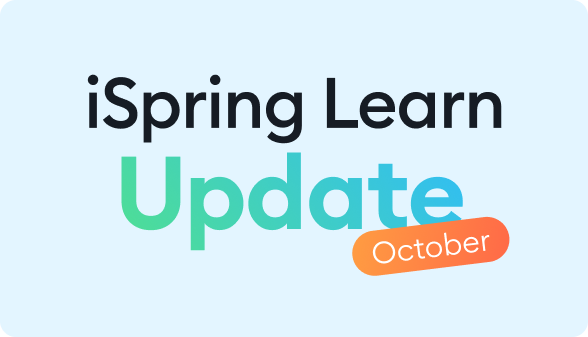
A fresh set of iSpring Learn updates is live! To keep you in the loop and help you get the most out of our eLearning solutions, once a month, we highlight all the new capabilities that you can start using right away!
In this article, we’ll take you through seven highly-anticipated enhancements to the iSpring Learn LMS and how they can benefit your training experience. Read on!
Update #1. Catalog enhancements
In iSpring Learn, learners can access the catalog — a collection of courses organized by folders and available for enrollment. Previously, when training managers wanted to assign the same training to multiple departments, they had to either create copies in different catalog folders or set up a general category for the entire company.
Now you can add the same training content to multiple categories. In other words, you can easily upload materials and share them with different departments at once, ensuring that all learners have access to the training they need.
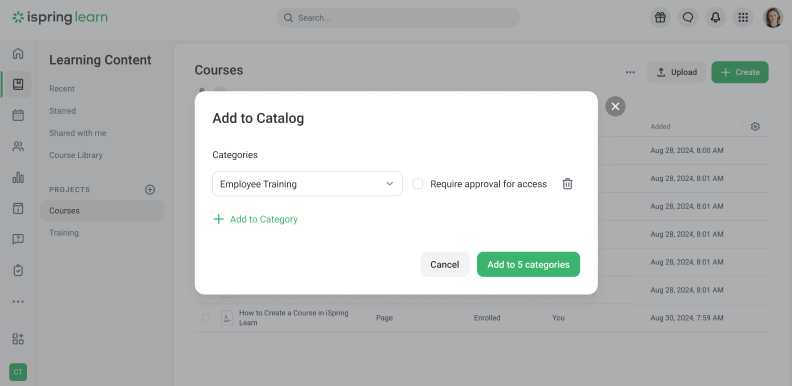
 Streamlined training setup
Streamlined training setup
Now, training administrators can save setup time by easily adding a course to multiple catalog categories for different departments. For example, they can share a sales strategy course with both the marketing and sales teams without any extra hassle.
 Better course navigation
Better course navigation
There’s no need to spend time editing catalog categories or trying to remember where a course was stored. Now, training administrators can quickly see which categories a course belongs to. They can view category content in the catalog settings and check where each course is stored in the “Learning Materials” section.
How to add courses and trainings to catalog [help doc] →
Update #2. Smooth Navigation in the Knowledge Base Articles
In iSpring Learn, you can quickly write policies and guidelines for your knowledge base directly on the platform. To make navigating by headings smoother, we’ve added an article outline that can be shown for long, scrollable tutorials or hidden for shorter instructions.
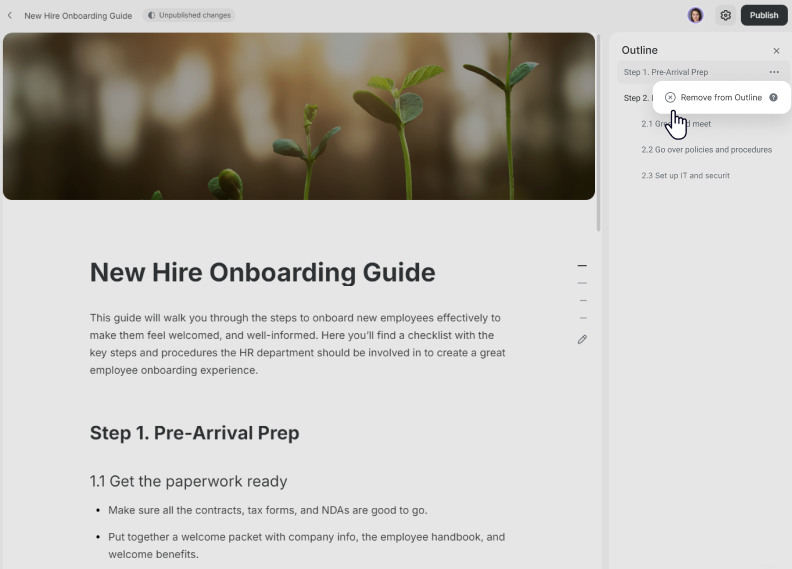
 Easy navigation and quick information search
Easy navigation and quick information search
No more endless scrolling — thanks to the article outline, your employees can quickly navigate long knowledge base articles by jumping to specific sections. This makes content more accessible, especially for users looking for specific information within a larger document.
 Improved knowledge base content clarity
Improved knowledge base content clarity
With a clear, collapsible outline, content authors can structure their long articles in a more organized way. This helps users absorb information at a glance and follow a logical flow, making it easier to learn or reference content.
How to add a content outline to an article [help doc] →
Update #3. Detailed Reports in the Knowledge Base
We’ve also enhanced the iSpring Learn knowledge base with analytics! Now, training managers and team leads can easily access reports that show who has viewed the documents, how many people have reviewed required policies, and identify those who may have missed important updates.

 Better oversight for managers
Better oversight for managers
With detailed reports, supervisors and managers can easily track who’s reviewing important policies, guidelines, and checklists — and who’s not. This helps them manage processes more effectively and quickly identify when team members need a reminder to check out the knowledge base.
 Ensure everyone is on the same page
Ensure everyone is on the same page
Managers can keep their team up to date and on the same page, making sure employees are using the most current information in their day-to-day work.
How to access detailed reports in the knowledge base [help doc] →
Update #4. Grading Assignments in the User Portal
Previously, instructors had to switch to the Administrator Portal to access and review learner assignments. Now, they can grade assignments right in the User Portal whenever it’s convenient — whether on a PC, tablet, or smartphone.
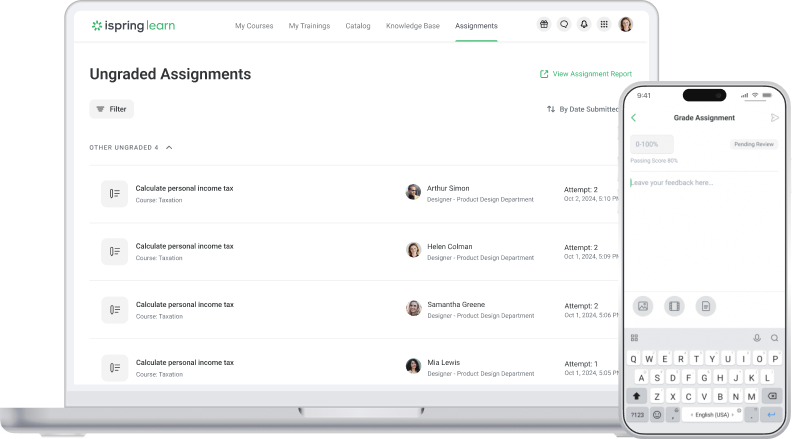
 Check assignments anytime, anywhere
Check assignments anytime, anywhere
No more switching between portals — now it’s super easy to check and grade assignments whenever it’s convenient, whether you’re in the office or on the go.
 Instant notification for timely assessments
Instant notification for timely assessments
With push notifications, instructors get a heads-up as soon as learners submit assignments. This allows them to grade assignments right away and give learners feedback faster, preventing any delays in the learning process.
How to grade learner assignments [help doc] →
Update #5. Drop-Down List in the Sign-Up Form
Previously, during self-registration, employees had to enter all the information manually, which could lead to errors, typos, and incorrect capitalization. Now you can create drop-down lists for some fields like branch or city, enabling learners to select from pre-populated lists:
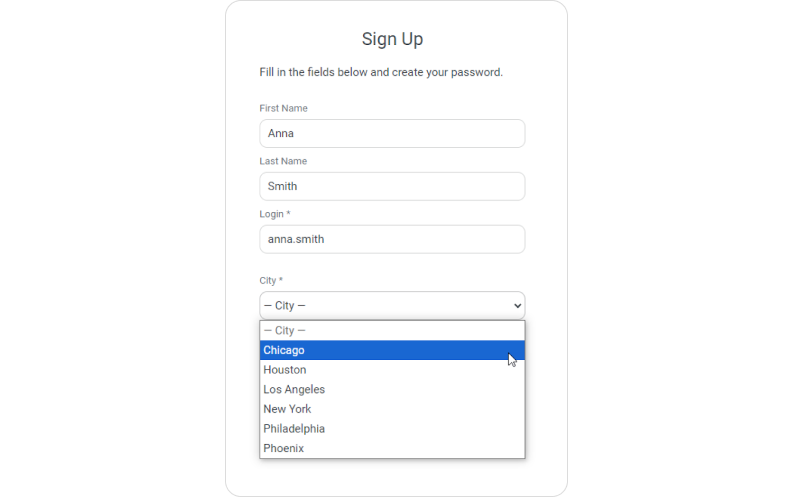
 Streamlined self-registration
Streamlined self-registration
With drop-down lists, there’s no need to enter information manually, making the registration process quicker. This allows learners to register in the LMS more easily and access their training faster.
 Guaranteed data accuracy
Guaranteed data accuracy
Pre-populated lists mean no more typos or formatting errors in important fields. This ensures that all entries are consistent and makes reporting more reliable.
How to create a drop-down list in the sign-up form [help doc] →
Update #6. Trash Folder for Deleted Content
Previously, if users accidentally deleted content from the Learning Materials section or Knowledge Base, they had to reach out to iSpring tech support for recovery. Now, with the new Trash folder, account owners, project owners, and team members with editing permissions can see who deleted content and restore it within 30 days.
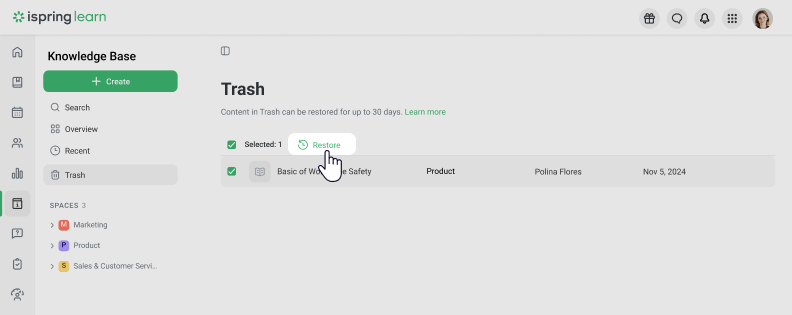
 Quickly restore content without contacting tech support
Quickly restore content without contacting tech support
The Trash folder saves you time and the hassle of contacting tech support. When you restore items, all content settings and data stay intact.
 Increase content accountability
Increase content accountability
With the ability to see who removed courses or guidelines, managers can address accidental deletions and offer guidance, reducing future errors and ensuring essential content stays intact.
How to restore deleted content in iSpring Learn [help doc] →
Update #7. Manager-Assigned Courses from Catalog
The new Manager-Assigned Courses feature allows managers with the appropriate permissions to directly assign restricted-access courses and events from the Catalog to their team members. Administrators can still track these assignments through course reports, maintaining full visibility of the training process.
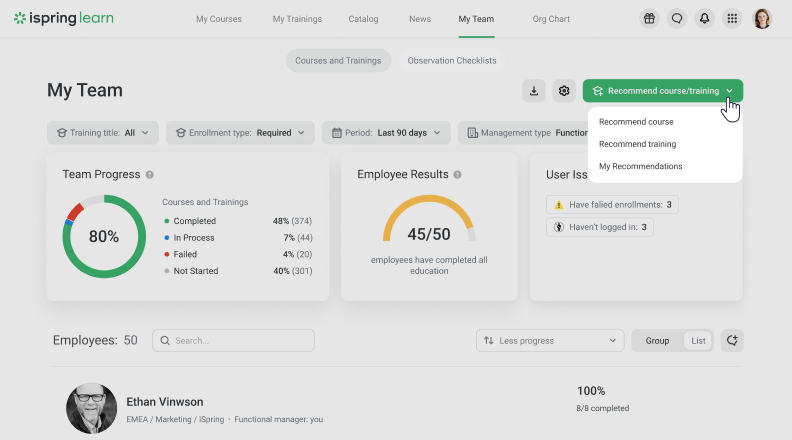
 More control for team leads over employee development
More control for team leads over employee development
Managers, who know their team’s needs best, can now quickly enroll employees in relevant training without waiting for approval from the training department. This autonomy allows them to respond swiftly to their team’s development needs, improving training efficiency.
 Time savings for training managers
Time savings for training managers
In large companies, training managers and LMS administrators receive lots of course requests daily, spending valuable time on approvals. Now, team leads can handle some of these assignments themselves, which means fewer requests and more time for training managers to focus on high-priority tasks.
How to assign courses from catalog [help doc] →
Not an iSpring Learn user yet?
At iSpring, all LMS enhancements are driven by real customer needs, feedback, and feature requests — not by short-lived industry trends. This ensures that each update serves a clear purpose and delivers tangible value to clients.
If you aren’t an iSpring Learn user yet, feel free to explore the platform during a free 30-day trial, see all these amazing updates firsthand, and decide whether it’s right for your business needs.
 Streamlined training setup
Streamlined training setup


